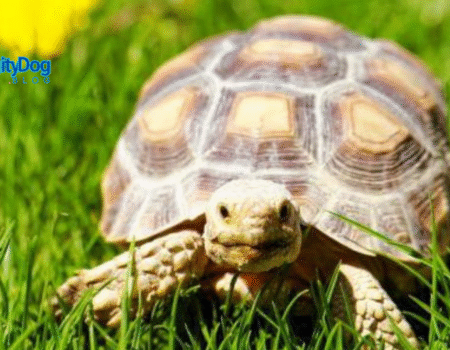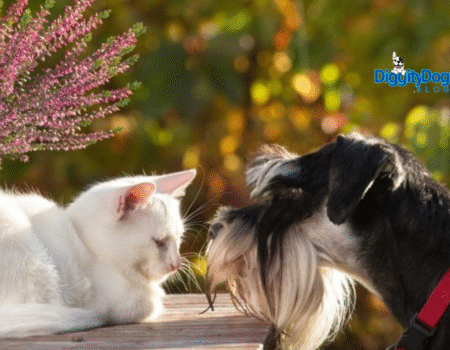Have you ever wondered what it would be like to have a pet that’s truly out of the ordinary? Something beyond the usual cats and dogs, something that will make your friends say, “Wow, I’ve never seen that before!” Well, if you’re ready to step into the world of exotic pets, I’ve got some fascinating options for you. Forget about conventional companions; let’s explore the realm of unique exotic pets that will capture your imagination and bring new levels of joy and intrigue into your life. Are you ready to discover the best exotic pets for the most adventurous animal lovers out there?
Key Takeaways:
- Exotic pets offer a unique and captivating companionship for animal lovers.
- Top 10 best exotic pets that make for fascinating and rewarding companions.
- Exploring the world of unconventional pets can be a rewarding experience.
- Understanding the specific requirements and social behaviors of exotic pets is crucial.
- Unleash your curiosity and dive into the extraordinary world of exotic pets!
Axolotl – Uniquely Aquatic Exotic Pet
One of the most peculiar and captivating exotic pets is the Axolotl. This aquatic critter is unlike most amphibians, as it retains its gilled juvenile stage throughout its life without undergoing metamorphosis. Originating from only two freshwater lakes in Mexico, Axolotls are rare and extraordinary creatures. They have a distinct appearance with their wide head, lidless eyes, and “feathery” external gills. Axolotls are mainly solitary animals and can thrive in a temperature range of 60-66 degrees Fahrenheit. They require a diet of high-protein foods, such as bloodworms and sinking salmon pellets, and need a well-maintained aquarium with enrichment items like fake plants and rocks. Proper care and attention to water quality are crucial for their well-being.
| Species | Appearance | Behavior | Diet | Habitat |
|---|---|---|---|---|
| Axolotl | Wide head, lidless eyes, feathery external gills | Solitary | High-protein foods like bloodworms and sinking salmon pellets | Aquarium with fake plants and rocks, maintained water quality |
Hedgehog – Adorable and Low Maintenance Exotic Pet
Hedgehogs have gained popularity as small exotic pets due to their cute appearance and low maintenance requirements. These spiny mammals are not related to rodents or porcupines but belong to the Erinaceinae subfamily of insectivores.
Hedgehogs are solitary animals and do not enjoy socializing with other hedgehogs. They can handle short periods of separation from their owners, making them suitable for frequent travelers. Their independent nature and low need for social interaction make hedgehogs ideal for those seeking a pet that requires minimal attention.
When it comes to their diet, hedgehogs are omnivorous. They primarily consume fruits and insects, providing a versatile range of feeding options. It’s important to offer a balanced diet to ensure their nutritional needs are met.
One of the appealing aspects of hedgehogs as pets is their adaptability to domestication. With proper and gentle handling, hedgehogs can be tamed and become comfortable with human interaction. It’s recommended to start the socialization process when they are young to establish a bond of trust.
When it comes to the care of hedgehogs, providing a proper habitat is essential. They should be housed in cages with soft flooring to protect their sensitive feet. Additionally, hedgehogs require ample exercise opportunities to prevent obesity and maintain their overall health and well-being.
Hedgehog Care Tips:
- Provide a spacious cage or enclosure with soft flooring.
- Offer a varied diet of fruits and insects to meet their nutritional needs.
- Handle them gently to establish trust and form a bond.
- Ensure they have ample exercise opportunities to prevent obesity.
Hedgehog Fun Fact:
Hedgehogs are named after their unique defense mechanism of rolling into a tight ball, resembling a spiky hedge.
Comparison of Hedgehogs and Porcupines:
| Hedgehogs | Porcupines |
|---|---|
| Belong to the Erinaceinae subfamily of insectivores | Belong to the family Erethizontidae |
| Have spines that are shorter and more flexible | Have quills that are longer and more rigid |
| Can roll into a ball for defense | Cannot roll into a ball, but raise quills when threatened |
Bearded Dragon – Friendly Reptile Companion
Bearded dragons are popular exotic pets among reptile enthusiasts. These medium-sized lizards, native to Australia, are known for their spiny scales and bearded appearance. Bearded dragons are docile and enjoy being handled, often recognizing their owners. They make excellent reptile pets for both beginners and experienced owners.
One of the reasons why bearded dragons are highly sought after as pets is their ease of handling. Unlike some reptiles that may be skittish or aggressive, bearded dragons are generally calm and tolerate human interaction well. They can be hand-fed and enjoy basking on their owner’s lap or shoulder, making them a delight to have as a companion.
Another advantage of owning a bearded dragon is their omnivorous diet. They have a wide range of food options, including insects, vegetables, and fruits. This varied diet ensures that they receive the necessary nutrients for their well-being. However, it’s important to note that the proportion of insects and vegetables should be balanced, with insects making up a larger portion during the juvenile stage and vegetables becoming more predominant in the adult stage.
Providing a suitable habitat is crucial for the health and happiness of bearded dragons. They require a spacious enclosure with proper heating and lighting to mimic their natural environment. The enclosure should include a basking area, a hiding spot, and different substrates to support their natural behaviors. Regular cleaning and maintenance of the enclosure are necessary to maintain their hygiene.
Like all pets, bearded dragons should receive regular veterinary care. Routine check-ups will help detect any underlying health issues and ensure their overall well-being. It is also recommended to consult a veterinarian specialized in reptiles to receive guidance on proper diet, habitat setup, and general care tips for bearded dragons.
Ducks – Unique Backyard Companions
While chickens have become popular backyard pets, ducks offer a more unique option for animal lovers. Ducks are social animals that thrive when living in a group. Pekin ducks are known for their friendly and calm temperament. They can provide companionship with proper preparation, including secure housing for inclement weather and a water source, ideally a pond or small pool. Ducks are omnivores and should be provided with a balanced diet of commercially prepared duck pellets, fresh vegetables, and insects. Regular cleaning and access to clean drinking water are essential for their health.
The Benefits of Having Ducks as Outdoor Pets
If you’re considering adding ducks to your backyard, there are several benefits to keep in mind:
- Ducks are charming and entertaining animals to watch, as they explore their surroundings and interact with each other.
- They have a unique quacking sound that adds a delightful ambiance to your outdoor space.
- Ducks can help control pests like slugs and snails, minimizing the need for harmful pesticides.
- They produce nutrient-rich manure that can be used as organic fertilizer for your garden.
With their distinct personalities and quirky behaviors, ducks make for unforgettable companions.
Creating a Duck-Friendly Environment
Before bringing ducks into your backyard, it’s crucial to provide them with a safe and comfortable environment:
- Secure Housing: Ducks require a predator-proof enclosure at night to protect them from predators like raccoons and foxes. Make sure the housing has adequate ventilation and is spacious enough for them to move around freely.
- Water Source: Ducks need access to water for swimming and cleaning themselves. A pond or small pool is ideal, but a large container that allows them to dip their heads and bodies will suffice.
- Nesting Area: Ducks need a quiet and secluded space to lay their eggs. Provide them with a nesting box or shelter where they can feel safe and secure.
- Enrichment: Ducks enjoy exploring and foraging for insects and plants. Create a natural environment for them by incorporating rocks, logs, and plants in their enclosure.
- Cleaning and Hygiene: Ducks produce a significant amount of waste, so regular cleaning is necessary to maintain a healthy environment. Ensure they have access to clean drinking water at all times.
By providing ducks with a well-designed living space, you can ensure their happiness and well-being.
Feeding Ducks a Balanced Diet
Proper nutrition is essential for the health of your ducks. Their diet should consist of:
- Commercially Prepared Duck Pellets: These pellets are specially formulated to meet the nutritional needs of ducks. They provide a balanced combination of proteins, vitamins, and minerals.
- Fresh Vegetables: Ducks enjoy a variety of vegetables such as lettuce, spinach, peas, and corn. Chop the vegetables into small, manageable pieces to make it easier for them to eat.
- Insects and Snails: Ducks are natural foragers and can find insects and snails in your backyard. These protein-rich snacks are a healthy addition to their diet.
It’s important to avoid feeding ducks bread, as it lacks essential nutrients and can cause health problems. Instead, focus on providing them with a diverse and balanced diet to ensure their overall well-being.
| Duck Breeds | Description |
|---|---|
| Pekin | A popular breed known for its white feathers and friendly temperament. Pekin ducks are great for beginners. |
| Rouen | A larger breed with beautiful mallard-like coloring. They are known for their calm and docile nature. |
| Muscovy | Distinctive breed with a humped appearance and a wide range of feather colors. Muscovy ducks are quieter and less prone to quacking. |
With proper care and attention, ducks can bring joy and uniqueness to your outdoor space. Consider adding these fascinating creatures to your backyard and experience the joys of having ducks as your unique exotic pets.
Green-Cheeked Conure – Colorful Avian Companion
The green-cheeked conure is a unique exotic bird that brings a burst of vibrant colors into your life. Known for its playful temperament and colorful appearance, this small parrot is an excellent choice for bird enthusiasts.
Unlike some parrots, the green-cheeked conure is quieter, making it suitable for those who appreciate the beauty of avian companionship without the noise. Their curious and affectionate personality adds an extra layer of joy to your home.
To ensure the well-being of your green-cheeked conure, provide them with a spacious cage filled with toys to keep them mentally stimulated. These intelligent birds thrive when they have opportunities to explore and interact with their surroundings.
When it comes to diet, a combination of commercial bird pellets and a wide variety of fresh fruits and vegetables will provide the necessary nutrition for a healthy green-cheeked conure. Remember to consult with a veterinarian to ensure their dietary needs are met.
Regular veterinary check-ups are essential to maintain the health of your green-cheeked conure. In addition, beak and nail trims should be performed as needed to keep them comfortable and well-groomed.
Benefits of Owning a Green-Cheeked Conure:
- Colorful and visually stunning companion
- Quieter than many other parrot species
- Curious and affectionate personality
- Great choice for beginner bird enthusiasts
Considerations for Owning a Green-Cheeked Conure:
- Provide a spacious cage with plenty of toys
- Offer a varied diet of bird pellets, fruits, and vegetables
- Schedule regular check-ups with a veterinarian
- Maintain beak and nail trims as needed
“The green-cheeked conure adds a vibrant touch to any bird lover’s home, bringing color and charm to their surroundings. With their playful temperament and unique appearance, these exotic birds are sure to capture your heart.” – Avian Enthusiast Magazine
| Pros | Cons |
|---|---|
| Colorful and visually stunning | Requires regular veterinary check-ups |
| Quieter than many other parrot species | May require frequent beak and nail trims |
| Curious and affectionate personality | Needs a spacious cage for mental stimulation |
| Great choice for beginner bird enthusiasts |
Anthropods – Unusual and Fascinating Pets
Anthropods offer a fascinating and unique choice for exotic pets. These extraordinary creatures, such as African millipedes and giant land crabs, can be intriguing additions to your pet collection. African millipedes, known for their numerous legs and segmented bodies, are low-maintenance pets that can thrive in an appropriate-sized aquarium. Their diet primarily consists of decayed vegetables, making them relatively easy to feed and care for.
“African millipedes are not only captivating to observe but also serve as natural recyclers, breaking down organic matter,” says Dr. Sarah Thompson, a zoologist with expertise in exotic pets. “Their gentle nature makes them fascinating companions for those seeking an unusual yet low-maintenance pet.”
On the other hand, giant land crabs, also known as moon crabs, are uncommon but fascinating pets. These crustaceans boast vibrant colors and peculiar behaviors, adding a unique touch to your exotic pet collection. Giant land crabs can be fed kitchen scraps and old pet food but need specific habitats to thrive. Their enclosures should be equipped with ample hiding places, as these crabs require a sense of security and enjoy burrowing.
Here’s a brief overview of the care requirements for African millipedes and giant land crabs:
Care Requirements for African Millipedes:
- Enclosure: Appropriately-sized aquarium with a secure lid
- Substrate: Moist soil or coconut fiber bedding
- Temperature and Humidity: Room temperature (around 70-75°F) and moderate humidity
- Diet: Decay vegetables (e.g., lettuce, carrots, cucumbers)
- Enrichment: Provide hiding spots like cork bark or leaf litter
- Additional Considerations: Ensure proper ventilation and clean the enclosure regularly
Care Requirements for Giant Land Crabs:
- Enclosure: Spacious terrarium with a secure lid
- Substrate: Deep layer of sand and coconut fiber
- Temperature and Humidity: Provide a temperature gradient (75-85°F) and high humidity (70-80%)
- Diet: Kitchen scraps (e.g., fruits, vegetables, grains) and old pet food
- Enrichment: Offer hiding spots, branches, and rocks for climbing and burrowing
- Additional Considerations: Maintain proper water dish and humidity levels
By understanding and meeting the specific needs of African millipedes and giant land crabs, you can provide them with a suitable and enriching environment. These unique anthropods can offer a captivating experience for those seeking extraordinary and unusual pets.
Fennec Fox and Russian Silver Fox – Taming the Wild Canines
For those looking for a unique challenge in taming a wild canine, Fennec Foxes and Russian Silver Foxes offer intriguing options. These small animals resemble pet cats but display wild behaviors that require careful taming. They require ample space for roaming and exploration. Both fox species have heightened senses and are more suitable for outdoor environments. It’s crucial to ensure that owning these wild canines is legal and ethical in your area before considering them as pets.
| Fennec Fox | Russian Silver Fox |
|---|---|
| The Fennec Fox is a small nocturnal fox species native to the Sahara Desert. It has distinct physical features, including large ears, a slender body, and a long bushy tail. The Fennec Fox is known for its unique appearance and charming personality. | The Russian Silver Fox, also known as the Siberian Silver Fox, is a domesticated variant of the Red Fox. This selectively bred fox species displays unique silver fur and modified behaviors compared to its wild counterparts. |
| Fennec Foxes require a spacious living environment with plenty of space for running, climbing, and digging. They are highly energetic and curious animals, making them suitable for experienced owners who can provide mental and physical stimulation. | Russian Silver Foxes, due to their domestication, may exhibit slightly less wild behavior. However, they still require a large and secure outdoor enclosure to satisfy their natural instincts. These foxes are social animals and benefit from interaction and enrichment. |
| Fennec Foxes have unique dietary requirements, consisting of a mix of high-quality dry dog food, fruits, and insects. It’s important to consult with a veterinarian or exotic animal specialist to ensure a balanced diet. | Russian Silver Foxes have dietary needs similar to their wild counterparts. Their diet mainly consists of meat, vegetables, and a minimal amount of fruits. Consultation with a knowledgeable veterinarian is advised to provide proper nutrition. |
Taming Wild Canines: Key Considerations
- Taming wild canines like Fennec Foxes and Russian Silver Foxes requires patience, dedication, and a thorough understanding of their natural behaviors. It’s important to approach their training with gentleness and respect.
- Both fox species have a strong sense of smell, hearing, and instincts. They may display territorial behavior and require proper socialization to adapt to a domestic setting.
- Secure outdoor enclosures are necessary to ensure the safety and well-being of these wild canines. They are skilled climbers and diggers, so fencing should be sturdy and extend below ground.
- Consult local laws and regulations regarding the ownership of exotic animals. Some regions may prohibit or have strict guidelines in place for owning Fennec Foxes or Russian Silver Foxes as pets.
Taming a wild canine such as a Fennec Fox or Russian Silver Fox is an exciting endeavor requiring commitment, knowledge, and proper facilities. These unique exotic pets offer a glimpse into the wild while still providing the opportunity to form a special bond. However, it’s essential to remember that these animals retain their natural instincts and may exhibit unpredictable behaviors. Responsible ownership and proper care are key to ensuring a harmonious coexistence.
Tortoises and Burmese Pythons – Extraordinary Exotic Pets
Tortoises and Burmese pythons are fascinating and extraordinary exotic pets that require unique considerations. Tortoises, with their distinctive dome-shaped shells, are herbivores and can have incredibly long lifespans, spanning decades or even centuries. To ensure their well-being, it is vital to provide them with an appropriate enclosure size, suitable substrates, and a proper herbivorous diet.
On the other hand, Burmese pythons are giant snakes that demand special care and attention. These magnificent creatures require custom-built enclosures with ample space for their large size. As carnivores, they need to be fed a diet consisting of appropriate prey, usually consisting of rodents. Due to their size and the potential risks associated with handling them, Burmese pythons are not suitable pets for beginners, and thorough research, as well as expert guidance, are essential when considering them as pets.
When contemplating tortoises and Burmese pythons as exotic pets, it is crucial to keep in mind the specific needs and requirements that these extraordinary animals have. Creating a large and secure enclosure that mimics their natural habitat is vital for their physical and mental well-being. Additionally, providing them with a proper diet that meets their nutritional needs is essential for their longevity and overall health. It’s always advisable to consult with reptile experts or reptile veterinarians to ensure that you can provide the best possible care for these extraordinary pets.
FAQ
What are some of the best exotic pets for unique animal lovers?
Some of the best exotic pets for unique animal lovers include Axolotls, Hedgehogs, Bearded Dragons, Ducks, Green-Cheeked Conures, Anthropods, Fennec Foxes, Russian Silver Foxes, Tortoises, and Burmese Pythons.
What makes Axolotls unique as an exotic pet?
Axolotls are unique aquatic animals that retain their juvenile gilled stage throughout their life. They have a distinct appearance with a wide head, lidless eyes, and feathery external gills. Originating from Mexico, Axolotls require specific temperature ranges, high-protein diets, and well-maintained aquariums for proper care.
What makes Hedgehogs suitable as low maintenance exotic pets?
Hedgehogs are low maintenance exotic pets due to their solitary nature and ability to tolerate short periods of separation. They have a cute appearance and can be tamed and domesticated with proper handling. Hedgehogs require a diet of fruits and insects and should be housed in cages with soft flooring to protect their sensitive feet.
Why are Bearded Dragons popular among reptile enthusiasts?
Bearded Dragons are popular among reptile enthusiasts due to their docile nature and ability to recognize their owners. They have a distinctive appearance with spiny scales and a bearded appearance. Bearded Dragons require spacious enclosures with proper heating and lighting, along with a varied diet of insects, vegetables, and fruits.
What are some unique features of ducks as backyard pets?
Ducks are social animals that thrive when living in groups. Pekin ducks, in particular, are known for their friendly and calm temperament. Ducks require secure housing for inclement weather and a water source, ideally a pond or small pool. They have an omnivorous diet and should be provided with a balanced diet of commercially prepared duck pellets, fresh vegetables, and insects.
Why are Green-Cheeked Conures considered unique exotic birds?
Green-Cheeked Conures are considered unique exotic birds due to their playful and affectionate personality, as well as their colorful appearance. They require spacious cages with toys for mental stimulation and a diet of commercial bird pellets, fruits, and vegetables. Regular veterinary check-ups and grooming are important for their well-being.
What should I know about owning anthropods as pets?
Anthropods, such as African millipedes and giant land crabs, offer a fascinating and unique choice for exotic pets. African millipedes are low-maintenance pets that can be kept in an aquarium and fed on decayed vegetables. Giant land crabs require specific habitats and diets and can be fed kitchen scraps and old pet food. Thorough research and understanding of their needs are essential before owning these pets.
What should I consider before owning Fennec Foxes or Russian Silver Foxes as pets?
Fennec Foxes and Russian Silver Foxes are wild canines that resemble pet cats but display wild behaviors. They require ample space for roaming and exploration and are more suitable for outdoor environments. It’s important to ensure that owning these pets is legal and ethical in your area before considering them.
What special considerations should I keep in mind if I want to own Tortoises or Burmese Pythons?
Tortoises have dome-shaped shells and herbivorous diets, and they can live for decades or even centuries. Proper enclosure size, substrates, and diet are crucial for their well-being. Burmese pythons are giant snakes that require custom-built enclosures and a carnivorous diet. Due to their size and potential dangers, they are not suitable for beginners. Thorough research and expert guidance are necessary when considering these extraordinary pets.









No Comment! Be the first one.